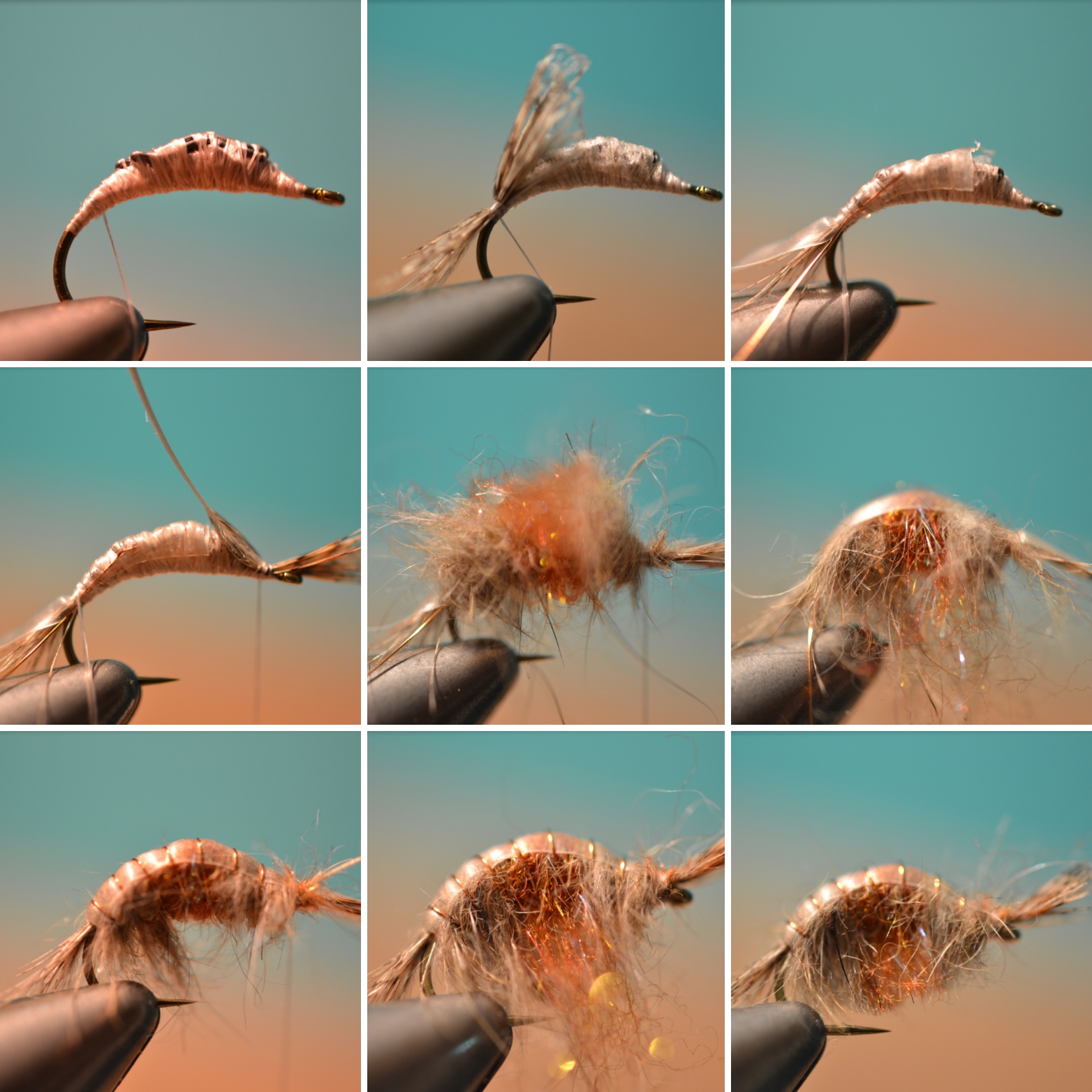Scuds, they are are everywhere on our rivers. So you might as well have some in your box! To the vise we go!
And for good reason, these appetizing crustaceans can be present in very large numbers (10,000 per/m2). However, scuds don’t have an easy life since a parasitic worm can infest them. And that’s exactly what’s getting interesting for us. The larva of the parasite develops in the belly of the scud and is characterized by an orange colour. The aim of the maneuver is for it to be eaten by a fish so that the larva of the worm becomes adult. So it’s not surprising that the trout spill their guts out. Thank you Mother Nature for this opportunity.
Recipes: hook, lead or nylon (if you want to make light gammares), light and orange dubbing, partridge, scud back (plastic membrane what), copper and thread.

When you fold the scud back, remember to comb the Dubbing down. When you do the copper strapping, the Dubbing will be imprisoned. Take it out with a needle and cut it if it’s too long.

 Français
Français